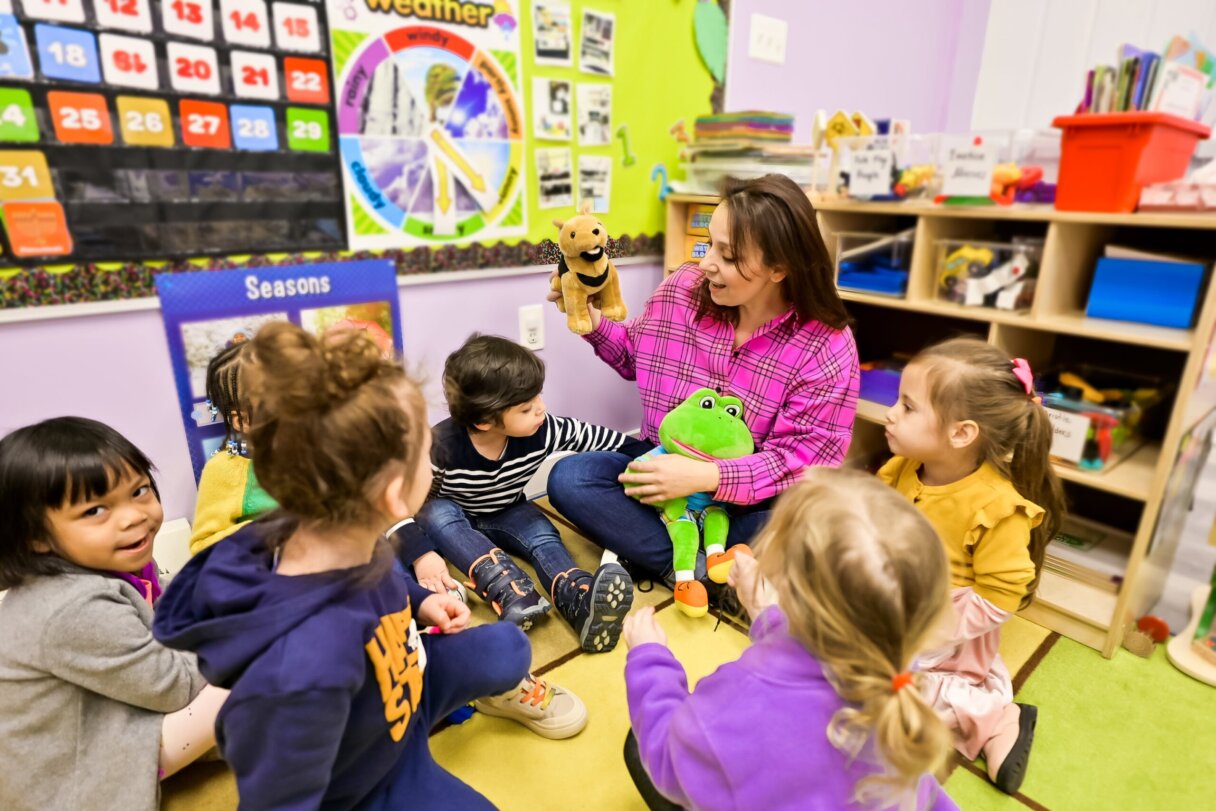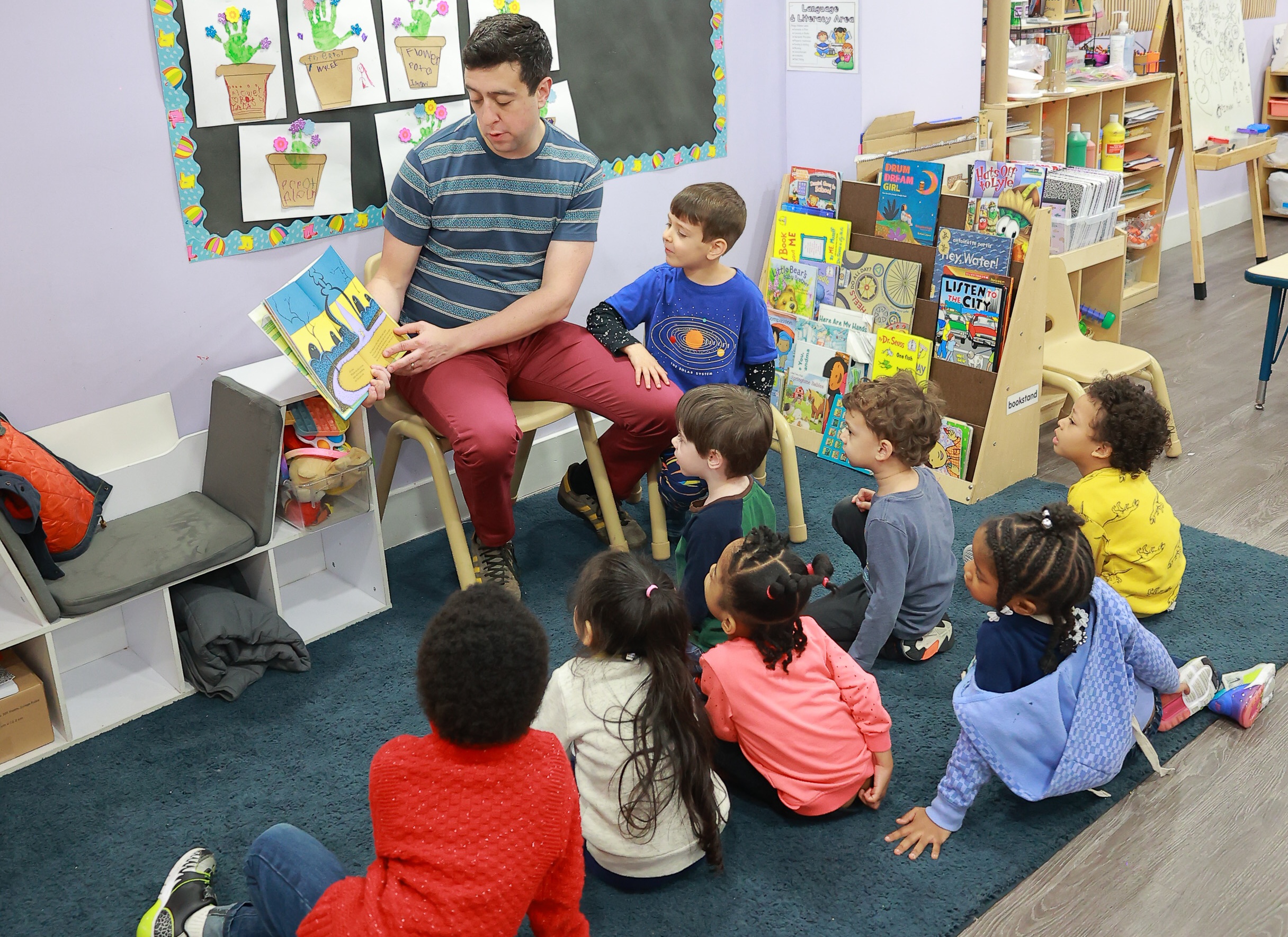The Complete Guide to Children's Stories
The Complete Guide to Children's Stories
Magical Tales That Shape Young Minds: From Bedtime Stories to Educational Adventures
In the enchanting world of childhood, few things hold as much power as a well-told story. Children's stories have been the cornerstone of human culture for millennia, passing down wisdom, values, and imagination from one generation to the next. From classic fairy tales that transport young minds to magical kingdoms, to modern educational stories that teach valuable life lessons, the realm of kids' literature continues to evolve while maintaining its fundamental purpose: to captivate, educate, and inspire.
Whether you're a parent seeking the perfect bedtime story, an educator looking for engaging classroom content, or simply someone who appreciates the artistry of storytelling, this comprehensive guide will take you on a journey through the diverse landscape of children's literature. We'll explore everything from timeless nursery rhymes to contemporary interactive stories, examining how these narratives shape young minds and contribute to cognitive, emotional, and social development.
The magic of storytelling lies not just in the tales themselves, but in the profound connection they create between storyteller and listener. As we delve into this world of imagination and wonder, you'll discover how picture books, fables, and adventure stories serve as powerful tools for learning, bonding, and growing together.
The Magic of Storytelling in Child Development
Cognitive Development
Stories serve as powerful catalysts for cognitive growth in children. When young minds engage with narratives, they're not simply listening passively – they're actively constructing mental images, following plot sequences, and making predictions about what might happen next. This process strengthens neural pathways associated with critical thinking and problem-solving.
Educational stories, in particular, excel at teaching complex concepts through relatable characters and situations. Mathematical concepts become adventures with counting bears, scientific principles transform into magical experiments, and historical events come alive through the eyes of young protagonists. This narrative approach to learning helps children retain information more effectively than traditional rote memorization methods.
Fantasy stories and magical tales push the boundaries of imagination even further, encouraging children to think beyond conventional limitations. When a child encounters a story where animals talk, objects come to life, or impossible things become possible, their minds expand to accommodate new ways of thinking about the world around them.
Emotional Intelligence
Through story characters, children learn to identify, understand, and manage emotions. When they follow a brave princess facing her fears or a shy animal learning to make friends, kids develop emotional vocabulary and empathy. These heartwarming tales provide safe spaces to explore complex feelings and social situations before encountering them in real life.
The Science Behind Story Magic
Language Development
Stories expose children to rich vocabulary, sentence structures, and language patterns that accelerate linguistic development.
Social Skills
Character interactions and moral dilemmas in stories teach children about relationships, conflict resolution, and social norms.
Creativity Boost
Imaginative stories stimulate creative thinking, encouraging children to generate their own ideas and solutions.
Exploring the Rich Tapestry of Children's Literature
Bedtime Stories: Peaceful Transitions to Dreamland
Bedtime stories hold a special place in the hearts of families worldwide. These gentle narratives serve as bridges between the active world of day and the peaceful realm of sleep. The best bedtime stories combine soothing rhythms, comforting themes, and just enough engagement to capture a child's attention without overstimulating their minds.
The tradition of bedtime storytelling creates powerful bonding moments between parents and children. As voices soften and lights dim, these intimate sharing sessions become treasured memories that children carry throughout their lives. The predictable routine of storytime also signals to young minds that it's time to wind down, making the transition to sleep smoother and more natural.
Essential Elements of Great Bedtime Stories:
- Gentle, calming language and imagery
- Positive, reassuring themes
- Appropriate length for attention spans
- Repetitive or rhythmic elements
- Comforting resolutions
Research has consistently shown that children who enjoy regular bedtime stories develop stronger reading skills, expanded vocabularies, and improved emotional regulation. The calm, focused attention required during story time also helps develop concentration skills that benefit academic performance later in childhood.
Fairy Tales: Timeless Magic and Universal Truths
Fairy tales represent perhaps the most enduring form of children's literature. These magical stories, passed down through generations, contain archetypal characters and universal themes that resonate across cultures and centuries. From Cinderella's transformation to Little Red Riding Hood's forest adventure, fairy tales provide frameworks for understanding complex human experiences through accessible narratives.
The power of fairy tales lies in their ability to address serious themes – such as good versus evil, justice, perseverance, and personal growth – within fantastical contexts that feel safe for young audiences. When children encounter these stories, they're not just entertained; they're learning fundamental lessons about morality, resilience, and the potential for positive change.
Modern interpretations of classic tales continue to evolve, reflecting contemporary values while maintaining the essential magic that has captivated audiences for centuries. These adaptations ensure that fairy tales remain relevant and meaningful for each new generation of readers.
Classic Elements
- • Magical transformations
- • Heroic journeys
- • Moral lessons
- • Justice prevailing
- • Happy endings
Psychological Benefits
- • Processing fears safely
- • Building hope and optimism
- • Understanding consequences
- • Developing empathy
- • Exploring identity
Cultural Impact
- • Preserving traditions
- • Teaching values
- • Inspiring creativity
- • Building cultural literacy
- • Fostering imagination
Educational Stories: Learning Through Narrative Adventure
Educational stories represent the perfect marriage between learning and entertainment. These carefully crafted narratives embed curriculum content within engaging plots, making complex subjects accessible and memorable for young learners. Rather than presenting facts in isolation, educational stories weave information into compelling adventures that children naturally want to follow.
The effectiveness of educational storytelling lies in its ability to provide context and emotional connection to abstract concepts. When children learn about the water cycle through the journey of a rainddrop character, or explore fractions by helping characters share pizza fairly, the learning becomes meaningful and personally relevant.
Modern educational stories cover an impressive range of subjects, from basic literacy and numeracy to advanced topics like environmental science, cultural diversity, and emotional intelligence. These stories serve as valuable supplements to formal education, reinforcing classroom learning while making it more enjoyable and memorable.
Subject Areas Covered:
Learning Benefits:
- • Improved retention through emotional engagement
- • Complex concepts made accessible
- • Cross-curricular connections
- • Development of critical thinking
- • Enhanced motivation to learn
- • Real-world application of knowledge
The Art of Visual Storytelling: Picture Books and Illustrated Tales
The Power of Pictures in Storytelling
Picture books represent a unique art form where visual and textual narratives work in harmony to create immersive storytelling experiences. These illustrated books serve as many children's first introduction to the world of literature, establishing foundational reading skills while nurturing visual literacy and aesthetic appreciation.
The illustrations in quality picture books do far more than simply decorate the text – they expand the narrative, provide emotional depth, and offer visual clues that help developing readers understand story context. For pre-readers, pictures serve as primary storytelling vehicles, allowing them to follow plots and engage with characters before they can decode written words.
The collaborative relationship between authors and illustrators in picture book creation results in stories that couldn't exist in either medium alone. This synergy creates rich, layered experiences that reward multiple readings and grow with children as their comprehension skills develop.
Visual Literacy Development
Picture books teach children to read images, understand visual metaphors, and interpret artistic styles, developing crucial skills for navigating our increasingly visual world.
Aesthetic Appreciation
Exposure to diverse artistic styles and techniques in illustrated books cultivates children's aesthetic sensibilities and appreciation for visual arts.
Reading Readiness
Picture books bridge the gap between oral storytelling and independent reading, providing scaffolding for emerging literacy skills.
Age-Appropriate Picture Book Categories
Board Books (0-2 years)
Durable, simple images with minimal text. Focus on concepts like colors, shapes, and familiar objects.
Toddler Stories (2-4 years)
Simple narratives with repetitive text, bright illustrations, and relatable everyday experiences.
Preschool Books (4-6 years)
More complex plots, character development, and detailed illustrations that support comprehension.
Early Readers (6-8 years)
Transitional books with increased text complexity while maintaining supportive illustrations.
Animal Stories and Fables: Wisdom Through the Natural World
The Enduring Appeal of Animal Characters
Animal stories hold a special fascination for children, offering familiar yet exotic characters that can embody human traits while maintaining their natural wonder. From Aesop's timeless fables to modern animal adventures, these stories use the animal kingdom as a lens through which children can explore human behavior, relationships, and moral principles.
The anthropomorphization of animals in children's literature serves multiple educational purposes. Animal characters can demonstrate behaviors and face consequences in ways that feel less threatening than human scenarios, making difficult lessons more palatable for young audiences. Additionally, these stories often introduce children to different species, habitats, and ecological concepts, fostering early environmental awareness.
Classic animal fables, such as "The Tortoise and the Hare" or "The Ant and the Grasshopper," continue to resonate with modern audiences because they address universal themes through memorable characters. These stories teach persistence, hard work, honesty, and other virtues through engaging narratives that children can easily understand and remember.
Educational Value of Animal Stories
Environmental Education
Animal stories introduce children to biodiversity, conservation concepts, and the interconnectedness of ecosystems through engaging narratives.
Empathy Development
Caring for animal characters helps children develop compassion and understanding for all living beings.
Moral Reasoning
Fables present clear moral dilemmas and consequences, helping children develop ethical thinking skills.
Popular Animal Story Themes
Friendship and Cooperation
Stories of unlikely animal friendships teaching acceptance and teamwork
Adventure and Exploration
Animal protagonists discovering new environments and overcoming challenges
Family and Belonging
Tales of animal families and finding one's place in the community
Growth and Change
Stories of metamorphosis, seasonal changes, and personal development
Interactive Storytelling: Engaging Young Minds in the Digital Age
The Evolution of Storytelling
Interactive storytelling represents the newest frontier in children's literature, combining traditional narrative elements with modern technology to create immersive, participatory experiences. These innovative approaches recognize that today's children are digital natives who expect to engage actively with content rather than consume it passively.
Interactive stories can take many forms, from simple choose-your-own-adventure books to sophisticated digital applications with animations, sound effects, and touch-responsive elements. The key advantage of these formats is their ability to adapt to individual learning styles and preferences, providing personalized storytelling experiences that can evolve with each reading.
The interactive element also helps maintain attention and engagement, particularly important for children with shorter attention spans or different learning needs. By allowing readers to influence story outcomes or explore narrative elements at their own pace, these stories promote active learning and critical thinking skills.
Physical Interactive Tools
Felt boards, puppet theaters, and manipulative story sets that allow children to physically engage with narrative elements.
- • Tactile learning experiences
- • Fine motor skill development
- • Creative storytelling opportunities
- • Multi-sensory engagement
Digital Interactive Books
E-books with animated illustrations, read-along features, and interactive elements that respond to touch or voice commands.
- • Multimedia storytelling
- • Adaptive difficulty levels
- • Progress tracking capabilities
- • Accessibility features
Augmented Reality Stories
Books that come alive through AR technology, allowing 3D characters and environments to emerge from printed pages.
- • Immersive visual experiences
- • Bridge between physical and digital
- • Enhanced engagement
- • Future-ready literacy skills
Benefits of Interactive Storytelling
Active Participation
Children become co-creators of the story experience, enhancing engagement and investment in the narrative.
Personalized Learning
Adaptive content that adjusts to individual reading levels, interests, and learning preferences.
Skill Development
Enhanced problem-solving abilities, decision-making skills, and technological literacy.
Social Interaction
Collaborative storytelling experiences that promote communication and teamwork skills.
Nursery Rhymes and Classic Tales: The Foundation of Literary Tradition
The Timeless Power of Rhythm and Rhyme
Nursery rhymes represent humanity's earliest attempts to make learning enjoyable and memorable for children. These simple, rhythmic verses have survived centuries of cultural change because they effectively combine entertainment with education, introducing young minds to language patterns, cultural references, and basic life concepts through memorable melodies and repetitive structures.
The musical quality of nursery rhymes serves multiple developmental purposes. The rhythm and rhyme schemes help children develop phonological awareness – a crucial precursor to reading success. When children chant "Humpty Dumpty" or sing "Twinkle, Twinkle, Little Star," they're unconsciously learning about syllables, stress patterns, and the sounds that make up language.
Beyond their linguistic benefits, nursery rhymes serve as cultural touchstones, connecting children to shared traditions and providing common reference points that persist throughout life. These verses often contain historical references, moral lessons, and social commentary packaged in formats accessible to the youngest audiences.
Key Benefits of Nursery Rhymes:
- Phonological awareness development
- Memory and recall enhancement
- Language pattern recognition
- Cultural literacy building
- Joy and emotional connection to language
Traditional Nursery Rhymes
Mother Goose Classics
Humpty Dumpty, Jack and Jill, Little Bo Peep
Lullabies
Rock-a-Bye Baby, Brahms' Lullaby
Action Rhymes
If You're Happy and You Know It, Head, Shoulders, Knees and Toes
Modern Adaptations
Multicultural Rhymes
Diverse traditions and languages represented
Educational Updates
Modern themes like technology and environment
Interactive Versions
Digital apps and multimedia presentations
Educational Applications
Classroom Use
Circle time, transitions, and group activities
Therapy Applications
Speech therapy and developmental support
Home Learning
Family bonding and daily routines
Classic Tales: Building Blocks of Literary Understanding
Classic tales form the foundation of literary education, providing children with archetypal stories, universal themes, and cultural references that appear throughout literature. These enduring narratives serve as launching points for discussions about character, plot, setting, and theme while introducing young readers to the rich tradition of storytelling that spans cultures and centuries.
Fairy Tale Classics
Cinderella, Snow White, Sleeping Beauty, and other timeless princess tales
Folk Tales
Stories from various cultures teaching traditional values and wisdom
Adventure Stories
Epic journeys and heroic quests that inspire courage and determination
Moral Tales
Stories that explicitly teach ethical principles and character values
Age-Appropriate Story Selection: Matching Tales to Development
Selecting appropriate stories for children requires understanding both developmental psychology and individual preferences. The right story at the right time can accelerate learning, build confidence, and foster a lifelong love of reading. Conversely, stories that are too advanced or simplistic can frustrate or bore young readers, potentially dampening their enthusiasm for literature.
Infants and Toddlers (0-2 years)
Building foundation for language and literacy
Developmental Characteristics:
- • Short attention spans (2-5 minutes)
- • Learning through sensory exploration
- • Developing language recognition
- • Attracted to high-contrast images
- • Responding to rhythm and repetition
- • Beginning to understand cause and effect
Ideal Story Features:
- • Board books with durable pages
- • Simple, bold illustrations
- • Minimal text with rhythmic patterns
- • Familiar objects and experiences
- • Interactive elements (textures, flaps)
- • Repetitive phrases and sounds
Preschoolers (3-5 years)
Developing language skills and story comprehension
Developmental Growth:
- • Expanded vocabulary
- • Understanding story sequence
- • Beginning to predict outcomes
- • Developing empathy
- • Increased attention span
Story Preferences:
- • Simple plots with clear resolution
- • Relatable characters and situations
- • Humor and silly situations
- • Moral lessons presented gently
- • Interactive participation opportunities
Learning Opportunities:
- • Pre-reading skills development
- • Emotional vocabulary expansion
- • Social behavior modeling
- • Critical thinking introduction
- • Cultural awareness building
Early Elementary (6-8 years)
Transitioning to independent reading
Reading Development Milestones:
Decoding Skills
Learning to sound out words and recognize sight words
Comprehension Growth
Understanding main ideas and making inferences
Fluency Building
Developing reading speed and expression
Appropriate Story Characteristics:
Early Reader Books
Controlled vocabulary with supportive illustrations
Chapter Books
Short chapters with continuing storylines
Series Books
Familiar characters in multiple adventures
Middle Elementary (9-12 years)
Developing sophisticated reading preferences
At this stage, children are capable of handling more complex narratives, multiple plotlines, and sophisticated themes. They're developing personal reading preferences and can engage with longer texts independently.
Adventure & Fantasy
Epic quests, magical worlds, and heroic journeys
Mystery & Detective
Problem-solving stories that challenge logical thinking
Historical Fiction
Stories set in different time periods with authentic details
Humor & Comedy
Funny stories that appeal to developing sense of humor
Creating Memorable Storytelling Experiences
The art of storytelling extends far beyond simply reading words from a page. Creating truly memorable storytelling experiences requires understanding your audience, mastering delivery techniques, and fostering an environment where imagination can flourish. Whether you're a parent sharing bedtime stories or an educator leading classroom storytime, these principles will help you transform ordinary reading sessions into magical journeys that children will treasure forever.
Voice and Performance Techniques
Character Voices
Develop distinct voices for different characters using variations in pitch, pace, and accent. This helps children distinguish between speakers and makes the story more engaging.
Emotional Expression
Match your tone to the story's emotional content. Use whispers for secrets, excitement for adventures, and gentle tones for tender moments.
Pacing and Pauses
Vary your reading speed to build suspense, emphasize important points, and allow children time to process information and form mental images.
Interactive Elements
Encourage participation through repeated phrases, sound effects, and opportunities for children to predict what happens next.
Environmental Considerations
Physical Comfort
Ensure comfortable seating, appropriate lighting, and minimal distractions. A cozy, inviting space enhances the storytelling experience.
Visual Positioning
Position yourself where all children can see the book illustrations clearly. Consider using a book stand or holding the book to one side while reading.
Timing Considerations
Choose optimal times when children are alert and receptive. Avoid scheduling during hungry, tired, or overstimulated periods.
Technology Integration
When appropriate, incorporate digital elements like background music, sound effects, or interactive displays to enhance the narrative.
Building Story Communities
Family Story Traditions
Establish regular storytelling routines that become cherished family traditions. Create special rituals around story time that children anticipate and remember throughout their lives.
Classroom Communities
Foster inclusive environments where every child feels valued and heard. Encourage sharing of cultural stories and personal narratives to build classroom community.
Digital Communities
Leverage technology to connect with broader storytelling communities. Share favorite books, participate in virtual story times, and discover diverse voices and perspectives.
The Future of Children's Literature: Innovation Meets Tradition
Embracing Technological Advancement
The landscape of children's literature is rapidly evolving, driven by technological innovations that create new possibilities for storytelling. From augmented reality books that bring characters to life to artificial intelligence that personalizes narratives, the future promises exciting developments that will transform how children experience stories.
However, this technological revolution doesn't diminish the importance of traditional storytelling elements. Instead, it enhances them, creating hybrid experiences that combine the intimacy of human connection with the engagement potential of digital innovation. The most successful future stories will be those that thoughtfully integrate technology while preserving the fundamental human elements that make stories meaningful.
As we look ahead, the challenge lies in maintaining the balance between innovation and the timeless qualities that have made children's literature so powerful throughout history – emotional resonance, moral guidance, and the spark of imagination that ignites young minds.
Emerging Technologies
Virtual and Augmented Reality
Immersive storytelling experiences that allow children to step inside story worlds and interact with characters in three-dimensional spaces.
AI-Powered Personalization
Adaptive narratives that adjust to individual reading levels, interests, and learning styles, creating unique story experiences for each child.
Interactive Dialogue Systems
Voice-activated storytelling that responds to children's questions and allows them to influence story direction through conversation.
Cross-Platform Experiences
Stories that seamlessly transition between physical books, digital devices, and real-world activities, creating cohesive narrative experiences.
Evolving Content Themes
Environmental Consciousness
Stories addressing climate change, sustainability, and environmental stewardship as central themes for eco-aware generations.
Global Citizenship
Narratives that promote cultural understanding, empathy, and awareness of global interconnectedness in an increasingly connected world.
Mental Health Awareness
Age-appropriate stories that address emotional wellness, resilience, and mental health topics with sensitivity and hope.
Digital Literacy
Stories that teach responsible technology use, digital citizenship, and critical thinking about online information.
Preserving the Human Element
While technology offers exciting possibilities, the most important aspects of children's literature remain fundamentally human: the connection between storyteller and listener, the shared experience of wonder and discovery, and the profound impact of narrative on developing minds and hearts.
Emotional Connection
Technology enhances but never replaces the emotional bonds formed through shared storytelling experiences.
Human Guidance
Adult involvement remains crucial for helping children process, understand, and apply story lessons to their lives.
Imagination Spark
The most powerful technology cannot replicate the unique magic that happens when imagination meets narrative possibility.
Timeless Values
Core human values of love, kindness, courage, and wisdom remain constant regardless of delivery method.
The Endless Journey of Stories
As we've explored throughout this comprehensive guide, children's stories represent far more than simple entertainment. They are powerful tools for education, emotional development, cultural transmission, and human connection. From the gentlest lullabies that soothe infants to sleep, to the complex fantasy epics that challenge young minds, stories shape who we become and how we understand our world.
The magic of storytelling lies not just in the tales themselves, but in the moments of connection they create. Whether shared between parent and child at bedtime, explored together in a classroom, or discovered independently by a young reader, stories build bridges between hearts and minds, fostering empathy, understanding, and wonder.
As technology continues to evolve and new forms of storytelling emerge, the fundamental truth remains unchanged: children need stories, and stories need passionate advocates who understand their power. By choosing quality literature, creating engaging storytelling experiences, and fostering environments where imagination can flourish, we give children the greatest gift possible – a lifelong love of learning and discovery through narrative.
Ready to Begin Your Storytelling Adventure?
Discover an incredible collection of magical bedtime stories, educational tales, and interactive adventures specifically designed to captivate young minds and create lasting memories.
Explore Magical Bedtime Stories CollectionPremium Quality
Carefully curated stories that educate, entertain, and inspire
Family Friendly
Stories that bring families together and create lasting bonds
Educational Value
Learning opportunities woven seamlessly into engaging narratives















